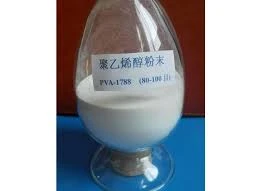The Price of Cellulose Powder An In-Depth Analysis
Cellulose powder, derived from the natural polymer cellulose, is an essential ingredient in various industries, including food, pharmaceuticals, cosmetics, and more. Its versatility, coupled with its eco-friendly nature, makes it a sought-after product in many applications. Understanding the factors influencing the price of cellulose powder is crucial for manufacturers, consumers, and investors alike.
What is Cellulose Powder?
Cellulose is a primary structural component of the cell walls in plants. When processed into a fine powder, it exhibits unique properties such as high absorbency, thickening capabilities, and emulsifying characteristics. These properties enable cellulose powder to serve various functions, including as a binding agent, filler, stabilizer, and thickener in diverse products. For example, it is commonly used in the food industry as a low-calorie filler, helping to enhance texture while reducing fat content. Additionally, its application in pharmaceuticals includes use as an excipient in tablets and capsules.
Factors Influencing Price
The price of cellulose powder can fluctuate due to several key factors
1. Raw Material Availability The primary source of cellulose powder is plant materials, particularly wood and cotton. Variability in the availability of these raw materials due to climatic conditions, deforestation regulations, and agricultural practices can impact the supply chain, ultimately affecting pricing.
2. Production Costs The process of converting raw cellulose into powder can be resource-intensive. Energy costs for production and transportation, labor costs, and the expense associated with maintaining sustainable production practices all contribute to the overall price. Manufacturers who invest in environmentally friendly practices may experience higher production costs, which can be reflected in the final price of cellulose powder.
cellulos powder price

3. Market Demand The demand for cellulose powder has been steadily increasing as industries shift towards more sustainable and natural ingredients. This trend is particularly noticeable in the food and beverage sector, where there is a growing inclination towards healthier product alternatives. Fluctuating demand can significantly impact prices; when demand surpasses supply, prices tend to rise.
4. Competition and Market Trends The cellulose powder market is dynamic, with numerous suppliers and emerging alternatives. Innovations in production methods or substitutes for cellulose powder can influence market competition and pricing strategies. For example, as synthetic alternatives become more common, they may affect the demand for traditional cellulose, resulting in competitive pricing.
5. Geopolitical Factors International trade agreements and tariffs can also impact the price of cellulose powder. Countries that export cellulose-rich resources may impose tariffs, while importing countries could face fluctuations based on trade relations. Political stability in producing regions also plays a role, as unrest can disrupt supply chains.
Global Market Trends
The global cellulose powder market is projected to witness substantial growth in the coming years. Analysts indicate that the increasing preference for natural and organic products will drive this growth, particularly within the food and cosmetics industries. As manufacturers seek to enhance product quality and consumer safety, the demand for high-grade cellulose powder is expected to escalate, potentially leading to price increases.
Moreover, advancements in technology are facilitating more efficient extraction and processing methods, which could help stabilize prices over time. Sustainable practices are becoming more widespread, encouraging companies to optimize costs while maintaining product quality.
Conclusion
In conclusion, the price of cellulose powder is influenced by a complex interplay of factors, including raw material availability, production costs, market demand, competition, and geopolitical considerations. As industries increasingly focus on sustainability and natural ingredients, the market for cellulose powder is poised for growth. Understanding these dynamics will be essential for stakeholders navigating the cellulose powder landscape, as they make informed decisions in a rapidly evolving market environment. Whether you're a manufacturer or a consumer, keeping an eye on these trends will be crucial as the cellulose powder industry continues to develop.
-
A Comprehensive Guide to Methyl Ethyl Hydroxyethyl Cellulose: Applications and Industry InsightsNewsNov.24,2025
-
Understanding Methyl 2 Hydroxyethyl Cellulose: Uses, Benefits & Industry InsightsNewsNov.24,2025
-
Hydroxyethyl Methyl Cellulose HEMC: Industrial Uses, Benefits & Future TrendsNewsNov.23,2025
-
HEMC Cellulose: Versatile & Sustainable Industrial Polymer | YoungcelNewsNov.23,2025
-
Methyl Hydroxyethyl Cellulose: Versatile Building Block for Industry & SustainabilityNewsNov.23,2025
-
CAS 9032 42 2: Understanding Polyvinyl Alcohol's Impact on Industry & SustainabilityNewsNov.22,2025




